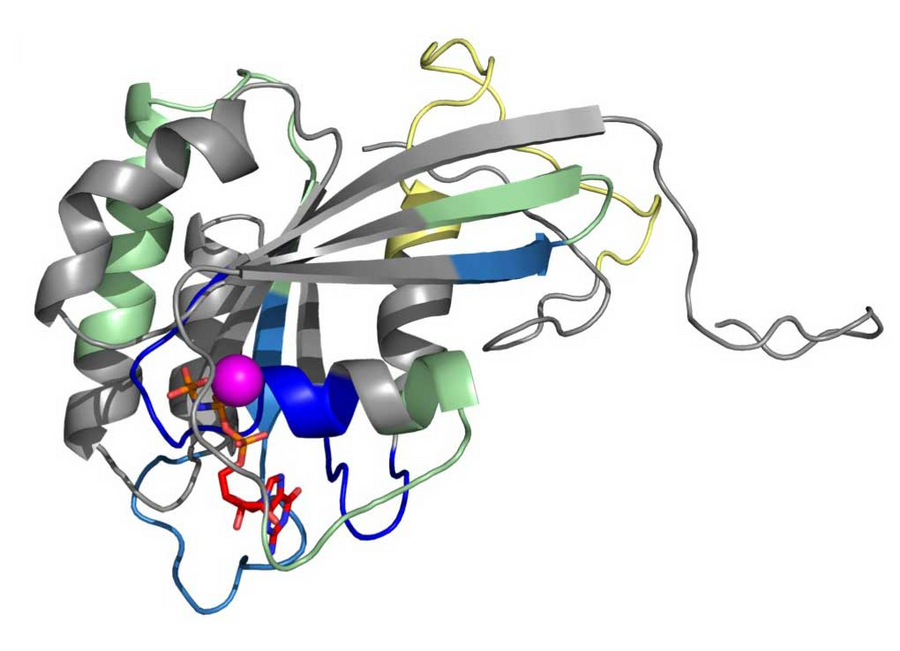
Model of Rab5 protein structure showing structural changes that occur during activation. Copyright: Cezanne et al., eLife / MPI-CBG & CSBD
Cells are well-ordered entities, organized into different compartments, called organelles, most of which are separated from the rest of the cell by a membrane in order to carry out special functions. Membranes are much more structured than commonly thought. Their functions depend on biological macromolecules, proteins and lipids, that can organize themselves into specific patterns on organelle membranes. The research lab of MPI-CBG director Marino Zerial works on endosomes, membrane-bound organelles that receive molecules from the surface of the cell or the outside environment and distribute them within the cell, similar to a post-office. Such a sorting activity also depends on the organization of the membrane itself into separate compartments or sub-domains.
A key protein that regulates the activity of the endosome is called Rab5. Rab5 acts as a molecular switch, shifting between an off- (inactive) and on- (active) state. A previous study of the Zerial lab hypothesized that the switch activity of Rab5 can be amplified on the endosome to create, together with other proteins, sub-domains on the membrane of the endosome. To prove this experimentally, researchers from the Zerial lab and the group of Ivo Sbalzarini at the MPI-CBG, the Center for Systems Biology Dresden and the TU Dresden, collaborated for a follow-up study. With a minimal set of proteins, the researchers set out to reconstitute the patterning process of proteins on artificial membranes. Reconstitution approaches like this allow researchers to study and specifically manipulate a process in a controlled environment. Anastasia Solomatina from the group of Ivo Sbalzarini supported the experimental work by developing novel image analysis methods to analyze spatial patterns on a 3D surface.
Alice Cezanne, the first author of this study, explains: “We found that the Rab5 protein creates a sort of positive feedback loop: by interacting with another protein complex, Rab5 is ‘switched on’ after it binds to the lipid membrane but then it acts to recruit more Rab5 proteins to the same spot on the membrane.” In this way, Rab5 catalyzes the formation of functional ‘domains’ on the surface of the endosome which are important in accepting material into the endosome for sorting and delivery to the rest of the cell.
Another finding of the study is that the creation of such protein domains on the membrane is not just a protein-driven process, but that the lipid membrane also plays an essential role. “We discovered that multiple specific lipids need to be present in the membrane to allow Rab5 domains to form,” says Alice, “and we expect that this isn’t unique to Rab5, but instead holds true for many other proteins that have a similar capacity to self-organize and pattern membranes.”
Alice Cezanne, Janelle Lauer, Anastasia Solomatina, Ivo F Sbalzarini, Marino Zerial: A non-linear system patterns Rab5 GTPase on the membrane. eLife, 8 June 2020. doi: 10.7554/eLife.54434